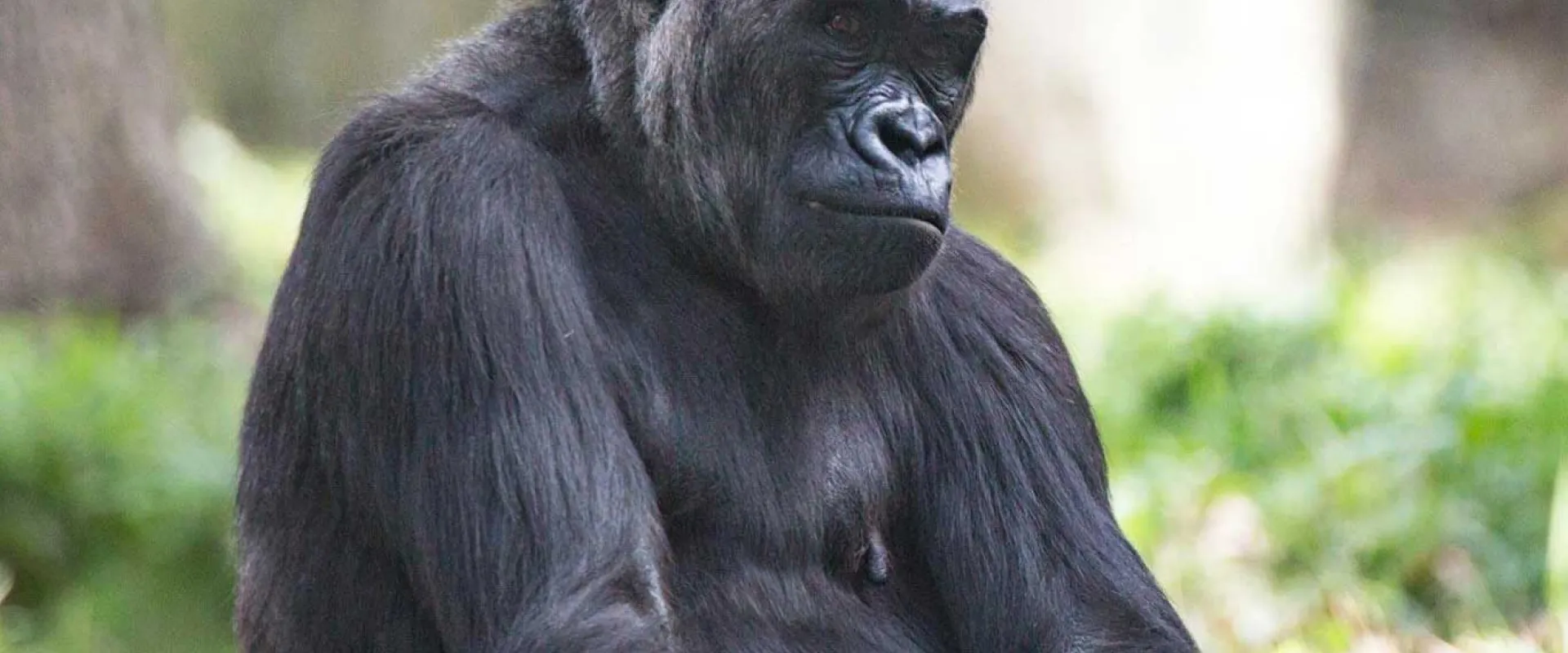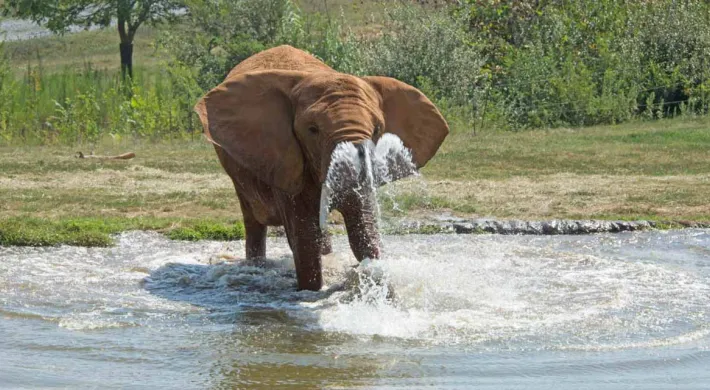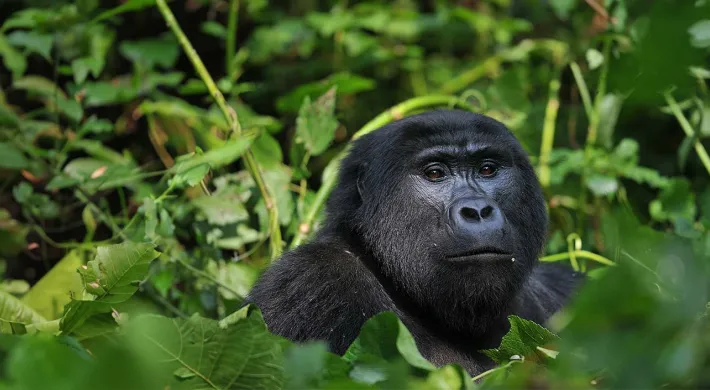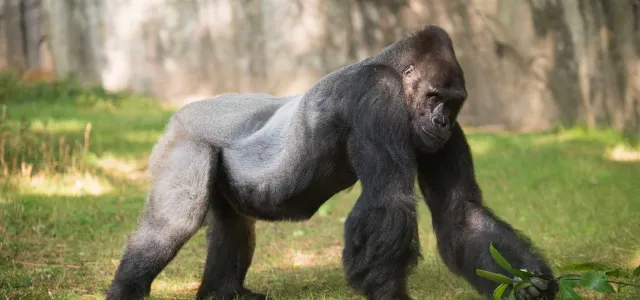Written by Emily Lynch, Ph.D., Associate Curator of Research, North Carolina Zoo
Did you know that you are a GREAT ape?
A great ape is a type of primate, a mammal, and are characterized by five fingers on each hand with lots of flexibility, excellent vision, large brains, no tail, and a long lifespan. The other great apes on this planet - orangutans, gorillas, chimpanzees, and bonobos - only evolved about 16 million years ago; but what’s really cool is we are all very closely related to one another. Chimpanzees, for example, are more closely related to us than they are to gorillas. So, here we are, as humans, thinking we are so alone in this universe, when we have close relatives right here, right now, sharing our planet.
Unfortunately, these non-human great apes are all in trouble. Habitat loss and poaching threaten the future of our cousin species. Many experts work in the great ape’s native habitats of Africa and Asia to help mitigate these destructive forces, including the Zoo’s conservation staff. For apes under human care, dedicated professionals here at the North Carolina Zoo and other Association of Zoos and Aquariums accredited facilities focus on preserving these valuable species. One important part of this endeavor involves constantly working towards the best care possible of the zoo-housed great apes, ensuring their physical and psychological welfare.
Among these endangered animals, Cardiovascular Disease (CVD) has been identified as a major cause of death (again, just like in humans). It is therefore imperative that we do everything we can to understand and prevent this pernicious disease, with the ultimate goal of preserving and ensuring the welfare of zoo-housed great apes.
The Great Ape Heart Project based at ZooAtlanta (GAHP) was established as a multi-institutional effort in 2010 including participation from the North Carolina Zoo. It is currently funded by Institute of Museum and Library Services and ZooAtlanta and designed to address this very issue. GAHP has created an innovative and coordinated national program to better understand CVD and establish a uniform, cutting-edge, CVD diagnosis, treatment, and prevention strategy.
The North Carolina Zoo is committed to improving the health of all animals under human care and actively contributes to the GAHP. Out of the gorilla and chimpanzee groups housed here at the Zoo, two males participated in the project: Mosuba, a silverback gorilla (Picture 1), and Jonathan, an older, high ranking, alpha chimpanzee (Picture 2).

Picture 1: Mosuba roaming his territory
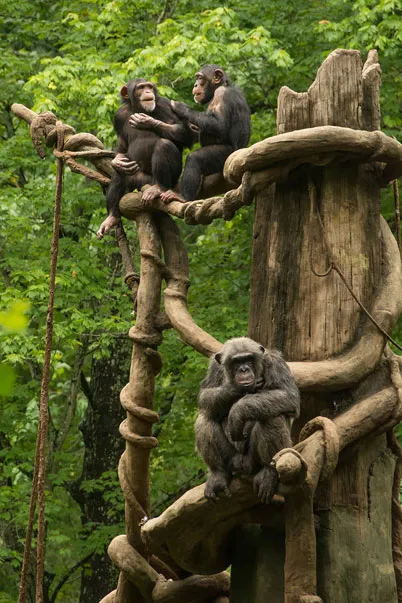
Picture 2: Jonathan enjoying a high view, with two females, Nori and Genie, above him
Both participate in getting an echocardiogram (an ultrasound of the heart) through simple, basic behavioral training. Our Director of Animal Health and chief veterinarian here at the Zoo, Dr. Jb Minter, explains how this is achieved:
“These training projects take a lot of cooperation and trust between the keepers and the animals with some input from the veterinary staff on positioning. But it is those relationships that make it work. We have found over the years that if we can get these animals to lay down on their sides for the exam, we get better images of the heart. We even had a special platform made for Mosuba to get him to lay down while his echo is being performed…[The echocardiogram] allows us to see the heart beating and we can use those images to identify heart disease.”
The images produced by these echocardiograms are sent to GAHP, to be reviewed by experts in the field and contribute to their greater database. GAHP Project and Database Manager, Dr. Marietta Danforth explained to me how the Project balances research and clinical work: “Our project does not just collect data. Our team reviews individual cases and gives recommendations, in real time, to directly improve animal care.” In other words, while the GAHP gathers essential data on great ape health to improve our larger understanding of CVD, it also assesses the health and wellbeing of individual animals and gives guidance to care teams about the best health practices for a given animal’s condition.
Ultimately, GAHP provides two important services. First, it offers veterinarians working with these great ape species a support network for the aid in treating and understanding cardiac disease. Second, it gathers health and physiological data of all zoo-housed great apes, with the goal of better assessing and treating CVD, and ultimately promoting the longevity and overall health of our closest living relatives.
Through programs like GAHP, we will be able to better care for zoo-housed great apes, which are endangered in their native habitats. Such excellent care ensures the welfare of the individual, as well as the preservation of these important species.
By taking such ambitious and proactive measures to help save the other great apes we share this planet with, we can strive to be the GREATEST ape!
